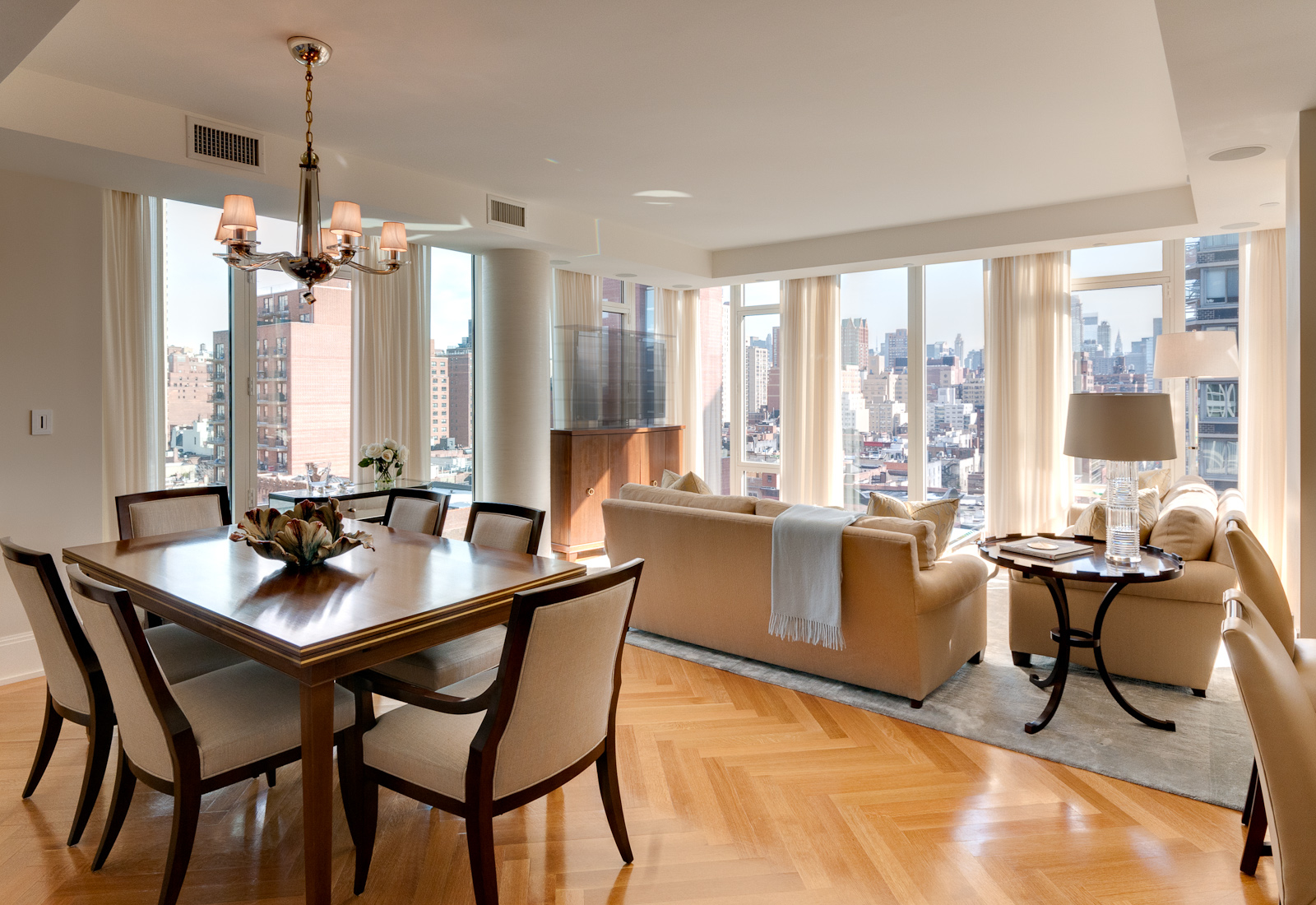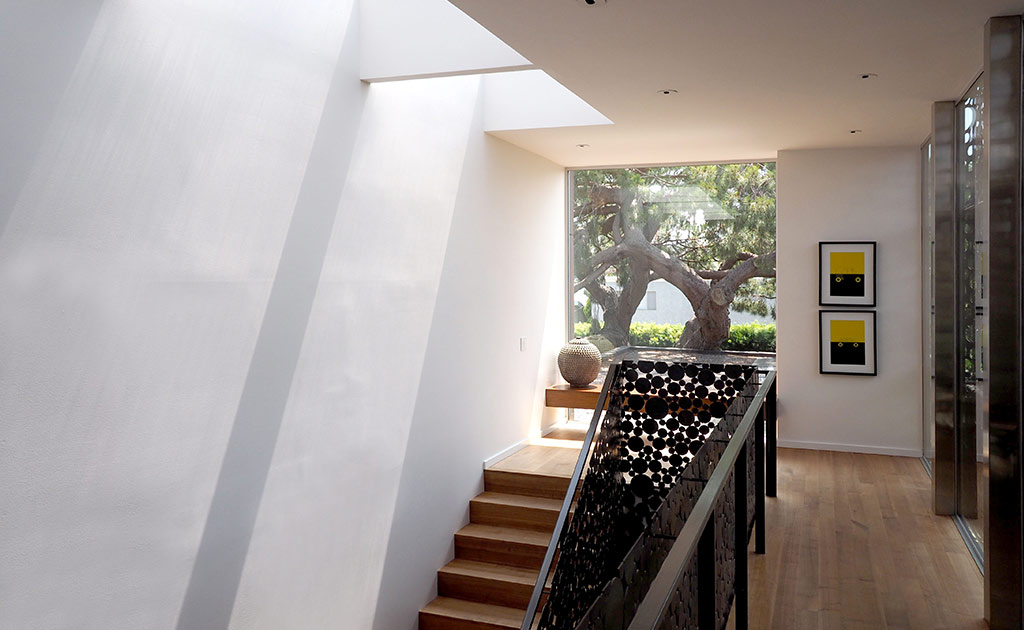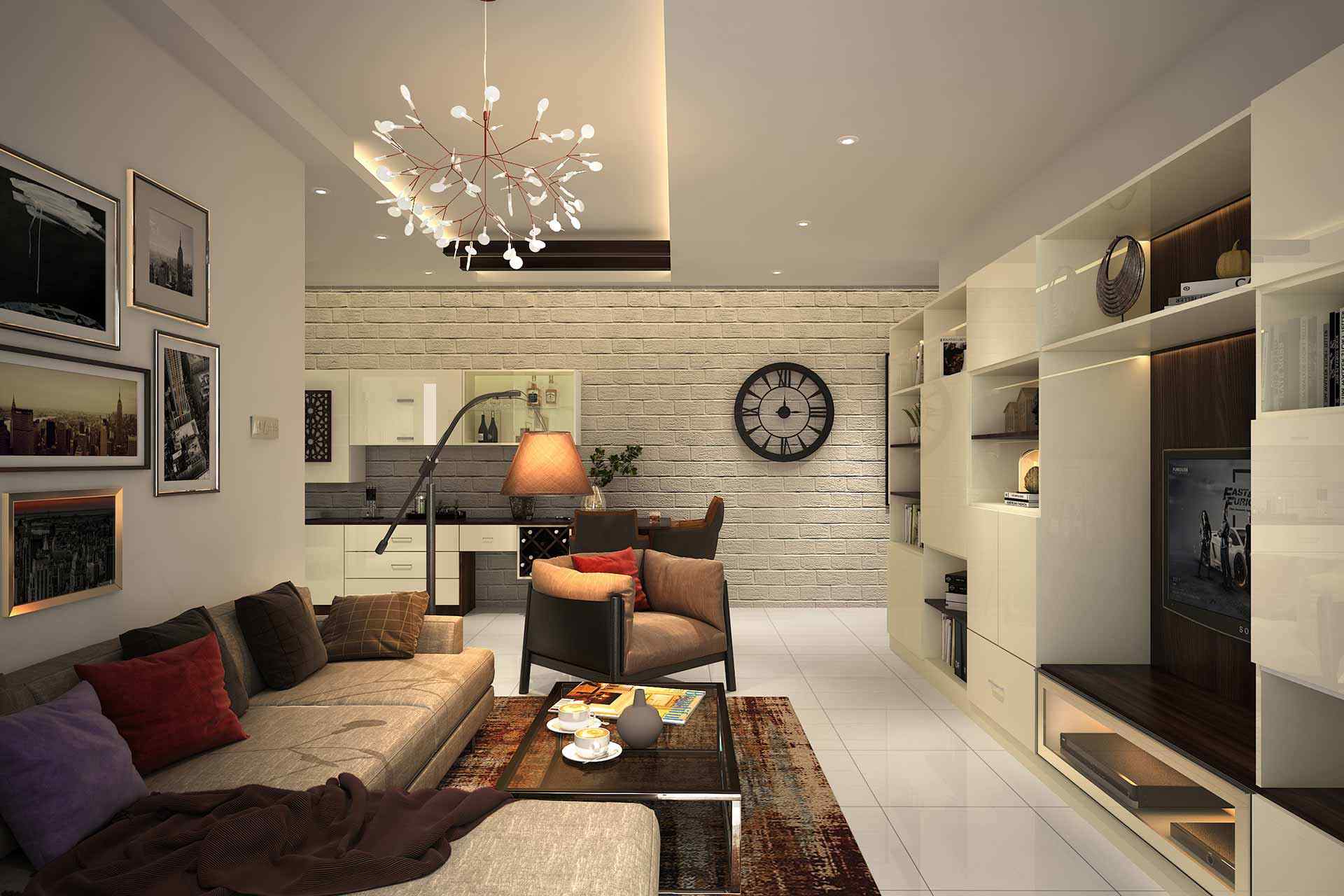An integrated living and dining room can offer a seamless and functional space for both relaxation and entertaining. By combining these two areas, you can maximize your living space and create a cohesive look in your home. If you're considering integrating your living and dining rooms, here are 10 design ideas to inspire you.Integrated Living and Dining Room Design Ideas
Before diving into design ideas, it's important to know how to create an integrated living and dining room. The first step is to define the purpose of each space. Will your dining area be used primarily for formal dinners or casual meals? Will your living room be a space for relaxation or entertainment? Once you have a clear idea of how you want to use each area, you can start planning the layout and design elements of your integrated space.How to Create an Integrated Living and Dining Room
One of the main benefits of integrating your living and dining rooms is maximizing space. By combining these two areas, you can open up your floor plan and create a more spacious and airy feel. To further maximize space, consider using multifunctional furniture such as a dining table that can also serve as a work desk or a coffee table with hidden storage.Maximizing Space with an Integrated Living and Dining Room
To create a cohesive look in your integrated living and dining room, it's important to choose a unifying design theme. This could be a specific color scheme, style, or even a focal point such as a statement piece of furniture. By tying both areas together with a common design element, you can create a seamless and visually pleasing space.Creating a Cohesive Look in Your Integrated Living and Dining Room
An open concept living and dining room is a popular design trend for modern homes. This layout creates a sense of flow and connectivity between the two areas, making it perfect for hosting parties or spending quality time with family. To achieve this look, consider using a neutral color palette and incorporating elements such as a kitchen island or breakfast bar to connect the two spaces.Designing an Open Concept Living and Dining Room
Integrating your living and dining room can also give your space a modern and sleek look. To achieve this, opt for minimalistic furniture and decor with clean lines and a neutral color palette. You can also incorporate elements such as a statement lighting fixture or a bold accent wall to add visual interest to the space.Integrating Your Living and Dining Room for a Modern Look
If you have a small living space, integrating your living and dining rooms can be a great solution. By combining these two areas, you can avoid creating a cramped and cluttered look. To make the most of your space, consider using a dining table that can be extended or folded when not in use and using wall-mounted shelves for storage instead of bulky furniture.Small Space Solutions: Integrated Living and Dining Rooms
Natural light can make any space feel more open and inviting. When integrating your living and dining rooms, consider maximizing natural light by choosing light and airy window treatments, using mirrors to reflect light, and incorporating light-colored furniture and decor. This will not only make your space feel larger, but also create a warm and welcoming atmosphere.Maximizing Natural Light in an Integrated Living and Dining Room
An integrated living and dining room should not only look good, but also serve its purpose. When designing your space, think about the functionality of each area and how they can work together. For example, you can use a dining table with built-in storage or a living room with a comfortable seating arrangement for both relaxation and entertaining.Creating a Functional and Stylish Integrated Living and Dining Room
Storage is essential in any living space, and integrating your living and dining rooms is no exception. To keep your space organized and clutter-free, incorporate storage solutions such as built-in shelves, storage ottomans, and hidden storage in your furniture. This will not only help you stay organized, but also add a stylish element to your space.Incorporating Storage in Your Integrated Living and Dining Room
Creating a Seamless Living Dining Room Integration for Your Home

The Benefits of an Integrated Living Dining Room
 When it comes to interior design, the living and dining rooms are two spaces that often go hand in hand. They are both important areas for entertaining guests, spending time with family, and creating a welcoming atmosphere in your home. However, many homeowners struggle with the layout and design of these rooms, trying to find a balance between functionality and aesthetics. This is where the concept of a living dining room integration comes in. By combining these two spaces, you can create a seamless flow and maximize the use of your home's square footage.
When it comes to interior design, the living and dining rooms are two spaces that often go hand in hand. They are both important areas for entertaining guests, spending time with family, and creating a welcoming atmosphere in your home. However, many homeowners struggle with the layout and design of these rooms, trying to find a balance between functionality and aesthetics. This is where the concept of a living dining room integration comes in. By combining these two spaces, you can create a seamless flow and maximize the use of your home's square footage.
Designing a Functional and Stylish Space
/orestudios_laurelhurst_tudor_03-1-652df94cec7445629a927eaf91991aad.jpg) One of the key benefits of an integrated living dining room is the increased functionality it provides. With the removal of walls and barriers, you can create a larger and more versatile space for everyday living and entertaining. This is especially beneficial for smaller homes or apartments where space is limited. You can also incorporate multifunctional furniture, such as a dining table that can double as a workspace or a living room coffee table with hidden storage, to make the most of the space.
But functionality doesn't have to come at the cost of style.
In fact, an integrated living dining room can provide a unique opportunity to create a cohesive and visually appealing design. By using
complementary colors and textures
, you can create a seamless transition from one area to the other. For example, if your living room has a neutral color palette, you can add a pop of color in your dining area with a statement rug or bold artwork. This will tie the two spaces together while still allowing each area to have its own distinct look.
One of the key benefits of an integrated living dining room is the increased functionality it provides. With the removal of walls and barriers, you can create a larger and more versatile space for everyday living and entertaining. This is especially beneficial for smaller homes or apartments where space is limited. You can also incorporate multifunctional furniture, such as a dining table that can double as a workspace or a living room coffee table with hidden storage, to make the most of the space.
But functionality doesn't have to come at the cost of style.
In fact, an integrated living dining room can provide a unique opportunity to create a cohesive and visually appealing design. By using
complementary colors and textures
, you can create a seamless transition from one area to the other. For example, if your living room has a neutral color palette, you can add a pop of color in your dining area with a statement rug or bold artwork. This will tie the two spaces together while still allowing each area to have its own distinct look.
Maximizing Natural Light and Space
 Another advantage of an integrated living dining room is the ability to maximize natural light and create a sense of spaciousness. By removing walls, you can open up the space and allow natural light to flow through both areas, making the room feel brighter and more inviting. You can also strategically place mirrors to reflect the light and create an illusion of a larger space.
Using light and airy window treatments
can also help in creating a sense of openness while still providing privacy when needed.
Another advantage of an integrated living dining room is the ability to maximize natural light and create a sense of spaciousness. By removing walls, you can open up the space and allow natural light to flow through both areas, making the room feel brighter and more inviting. You can also strategically place mirrors to reflect the light and create an illusion of a larger space.
Using light and airy window treatments
can also help in creating a sense of openness while still providing privacy when needed.
The Importance of Proper Planning and Design
 While the idea of a living dining room integration may seem simple, proper planning and design are crucial to achieving a successful result. It's important to consider the layout and flow of the space, as well as the placement of furniture and decor.
Creating zones
within the room can help define each area and make the space feel more organized and purposeful. Additionally,
choosing high-quality and durable materials
for your furniture and finishes is essential to ensure longevity and functionality.
In conclusion, an integrated living dining room can provide numerous benefits for your home, from increased functionality and style to maximizing natural light and space. With proper planning and design, you can create a seamless and harmonious space that will enhance your everyday living experience. So why not consider integrating your living and dining rooms to make the most of your home's potential?
While the idea of a living dining room integration may seem simple, proper planning and design are crucial to achieving a successful result. It's important to consider the layout and flow of the space, as well as the placement of furniture and decor.
Creating zones
within the room can help define each area and make the space feel more organized and purposeful. Additionally,
choosing high-quality and durable materials
for your furniture and finishes is essential to ensure longevity and functionality.
In conclusion, an integrated living dining room can provide numerous benefits for your home, from increased functionality and style to maximizing natural light and space. With proper planning and design, you can create a seamless and harmonious space that will enhance your everyday living experience. So why not consider integrating your living and dining rooms to make the most of your home's potential?







:strip_icc()/dining-area-bench-woven-chairs-27c84157-d67fb3d3a16148639a84ce48816d3295.jpg)





































/modern-dining-room-ideas-4147451-hero-d6333998f8b34620adfd4d99ac732586.jpg)







:max_bytes(150000):strip_icc()/DesignbyVelindaHellen_DIY_PhotobyVeronicaCrawford_5-3a24d1b0b5394eae892b8c5bbaea23f4.jpg)




:max_bytes(150000):strip_icc()/IMG_4823-5770a6f93df78cb62ce68417.jpg)



































